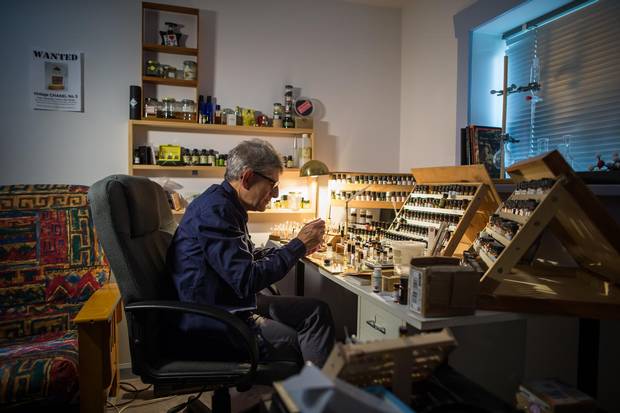Since childhood, Barry Shell has liked to smell things. Gayle MacDonald learns how he has turned that olfactory affection into a knack for creating sweet scents. Barry Shell’s nose has been a finely tuned instrument for most of his life.
When he was a boy, dairy, in particular, titillated his olfactory senses. And he drove his mother crazy sniffing eggs, cheeses and a specific brand of milk, Safeway’s Lucerne.
“I can’t remember why, but I think it had barnyard overtones that put me off,” the Vancouver native says. “At the table, I’d pick up and smell everything, and my mother would say: ‘Oh, Barry, why do you have to smell it? Just eat it.'”
Now 66, and retired from British Columbia’s Simon Fraser University, Shell has time on his hands to pursue his passion: olfaction and perfumery. Smells, he says, can repulse, warn of danger, evoke powerful emotion, or trigger long-forgotten memories. Ambergris, a byproduct of sperm whales, is classified as an animalic scent and, for whatever reason, it reminds him of a dear-departed, favourite uncle. “He wore a certain aftershave, and whenever I smell ambergris, it takes me back.”
Four years ago, after leaving his position as writer/editor of the newsletter SFU Research Matters, Shell went online to check out what was available for aspiring perfumers. He found a website for Dominique Dubrana, an eccentric perfumer who lives in the hills of Rimini, Italy. What caught his eye was a starter kit for making custom perfumes.
“It cost me about $400 but all these things came in the mail, all beautifully packed, in little wooden boxes,” says Shell, who majored in organic chemistry, but only worked in labs for a few years because it was “boring and slightly dangerous.”
The magical box from Italy was a sensory delight. “It was just glorious opening up the boxes, full of amber-coloured glass bottles with violet leaves, vetiver and the usual things like roses, cedar, orange, lemon, grapefruit.”
The self-taught smell guru now has some 500 scents in his meticulously labelled collection of vials and bottles of tinctures, extracts, oils and essences. There are citrus, florals, mossy woods, herbs, fruits and orientals. Some have exotic names like bergamot (the smell of Earl Grey tea) or galbanum (woody, green bamboo). Others are more everyday, such as pine….
Source: How Barry Shell followed his nose to become a smell guru













